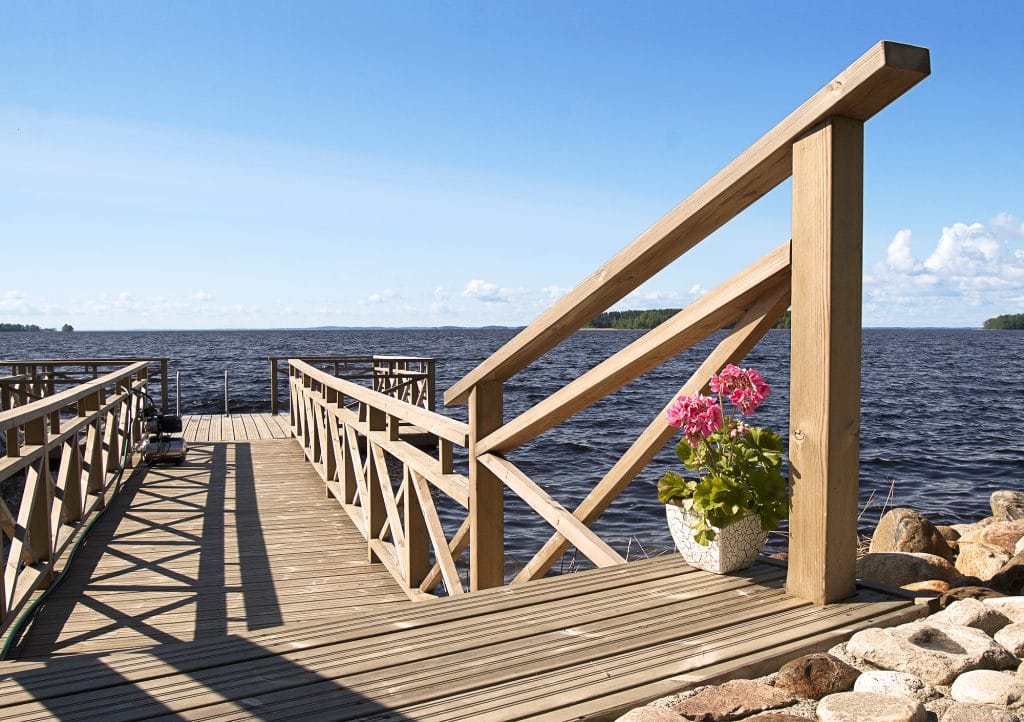
Look also these
How to build a dock that works for you
Building a dock does not take long. Accuracy is essential, however, for the best possible results. See below our tips for planning and designing your dock. These instructions help you build a dock that suits your purposes.
- Selecting the site
When selecting an ideal spot for your dock, take note of the surrounding buildings and available access routes. If there are small children in the family, make sure there is a clear access and unhindered view to the dock. Select a site where wind and waves do not put additional stress to the dock structures.
- Choosing the dock type
First consider the shoreline conditions such as formation, depth, changes in water levels, and ice conditions during winter. For deep and rough shorelines, the best choice is a floating dock. If the lake bed is soft or muddy, and the water is less than two metres deep, you can build an adjustable dock supported by posts. This way you can adjust the height of the dock according to water fluctuation. We recommend a permanent dock for shallow shorelines with low levels of water fluctuation. If the lake bed is soft, choose a dock supported by poles, and if the lake bed is firm, a pipe dock works well. Cantilever dock is your choice if the water is deep. You can fasten it to a cliff or onto a specifically built concrete post.
- Planning and building a dock
Build the ramp on the beach and then lift it to its position. For long and floating ramps, the linking sections need to be e.g. chained to allow movement, whereas the joints of permanent docks are fixed
Timber retailers give advice for planning, correct measurements, necessary materials and their quantities. The Kestopuu calculator is a handy tool for calculating the quantity of materials needed, and you can also turn to Kestopuu retailers for assistance!